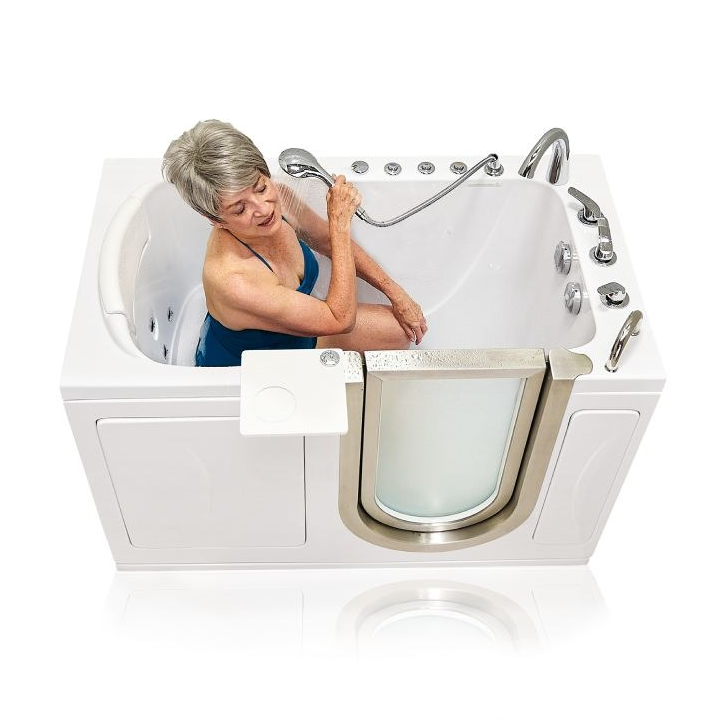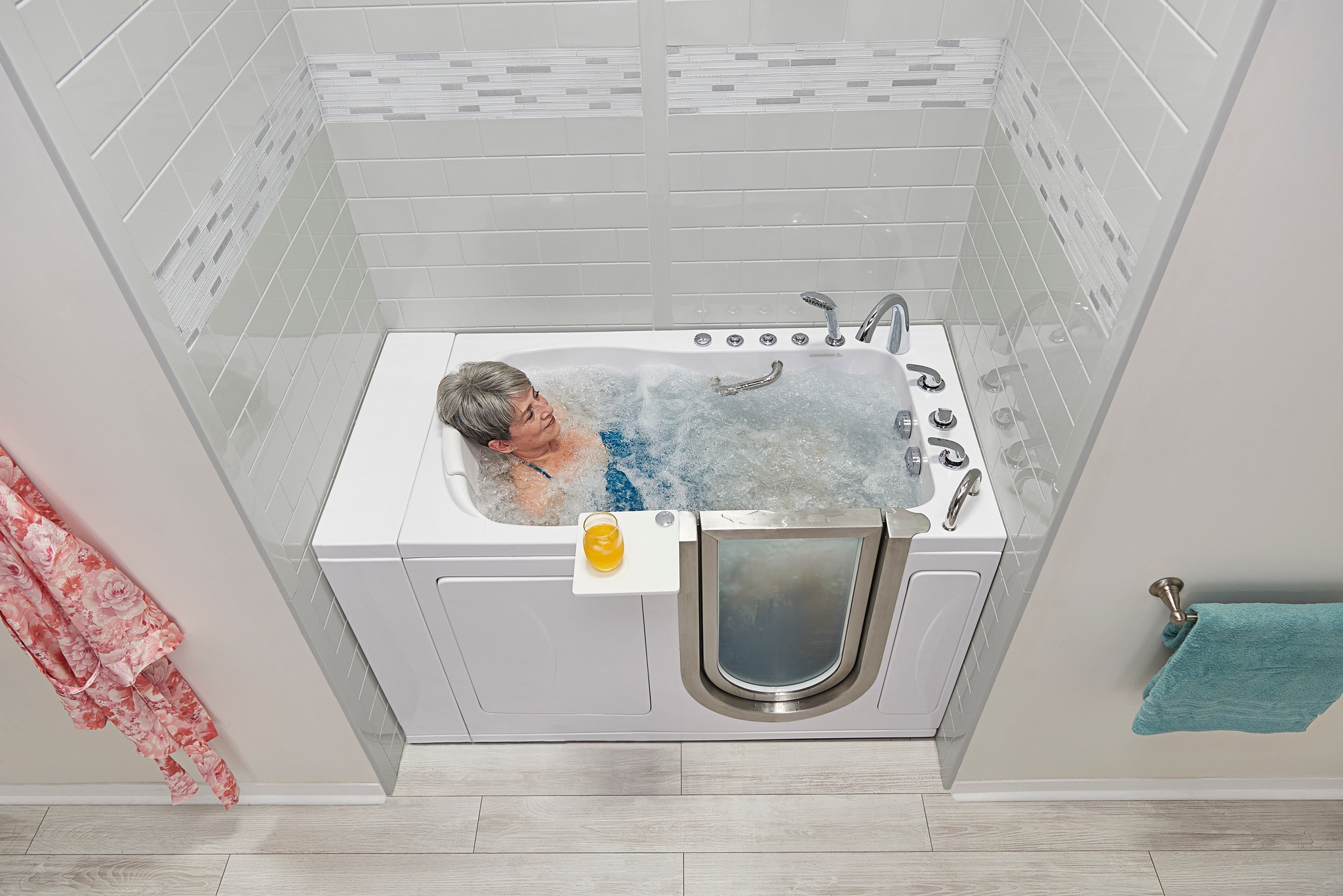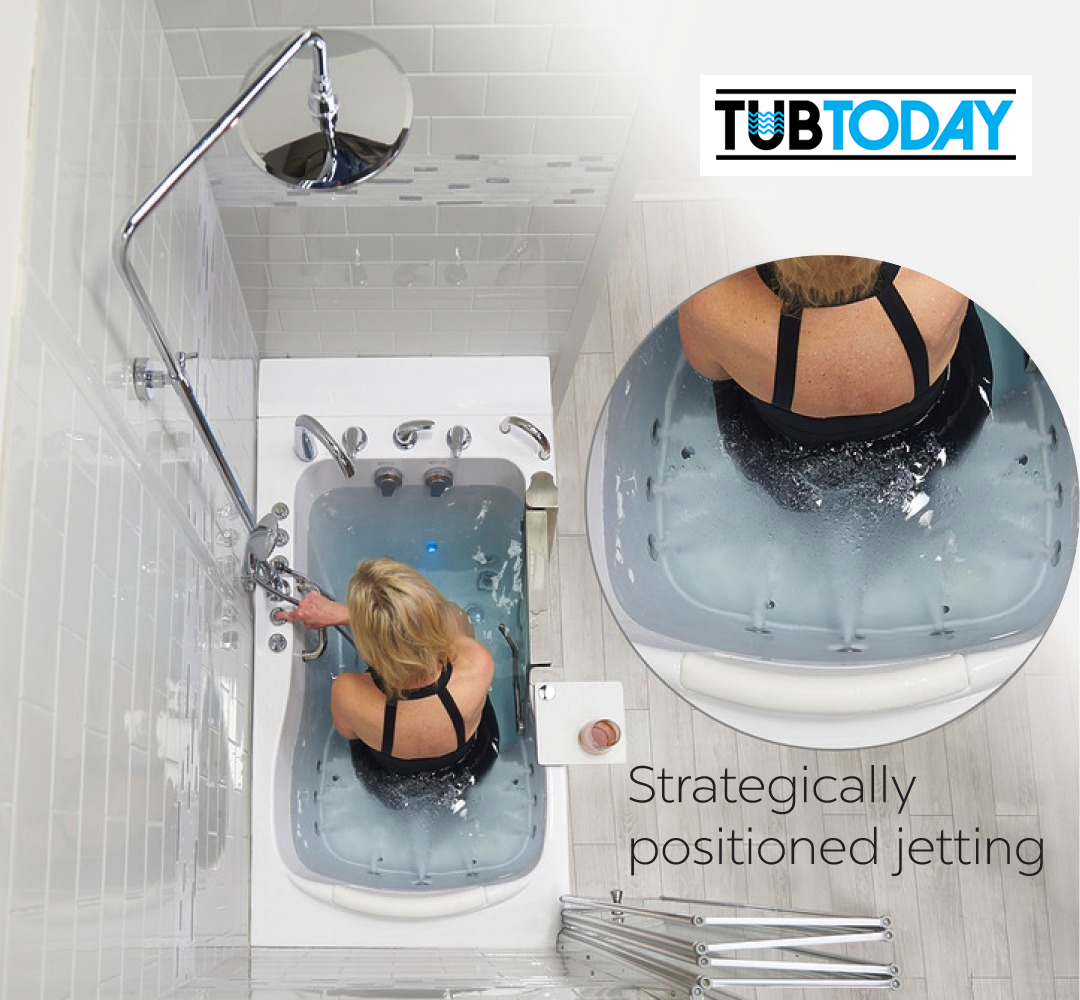
Installing a walk-in tub can provide convenience, safety, and therapeutic benefits for individuals who are aging in place or have limited mobility. These tubs offer a comfortable and secure bathing experience, allowing for greater independence and potentially increasing the value of a home. However, the cost of walk-in tub installation can vary depending on several factors, including tub size, type, material, bathroom size, labor, and brand.
The typical range for walk-in tub installation is between $2,500 and $12,000, with a national average cost of $6,000. However, costs can fluctuate regionally and depend on various factors. For instance, high-end luxury walk-in tubs may cost up to $20,000, according to Angi and HomeAdvisor reports.
 The cost of a walk-in tub is influenced by factors such as tub size and type. Basic walk-in tubs without additional features can start at around $2,500. Longer tubs that allow users to stretch their legs or lie down can be more expensive and may require bathroom renovations. The material of the tub, such as gelcoat, acrylic, or porcelain, can also affect the price, with acrylic tubs being the most expensive, ranging up to $13,500 after installation.
The cost of a walk-in tub is influenced by factors such as tub size and type. Basic walk-in tubs without additional features can start at around $2,500. Longer tubs that allow users to stretch their legs or lie down can be more expensive and may require bathroom renovations. The material of the tub, such as gelcoat, acrylic, or porcelain, can also affect the price, with acrylic tubs being the most expensive, ranging up to $13,500 after installation.
Bathroom size is another important consideration as larger bathrooms can accommodate various tub sizes with minimal alterations. However, smaller bathrooms or those requiring significant remodeling may increase the overall cost by $6,150 to $15,250.
The labor involved in installing a walk-in tub can range from $1700 to $3,000 for a simple retrofit. Additional plumbing and electrical work, as well as structural upgrades, may be necessary, especially for longer or two-seater tubs, which can drive up labor costs. The brand of the tub can also impact the price, with different brands offering various quality, warranty, and feature options.
Aside from the base cost, there are additional expenses and considerations to keep in mind. These include the removal of the old tub, floor reinforcement, tiling, plumbing and electrical work, bathroom remodeling, shower-to-tub conversion, and extra features and upgrades. Each of these factors contributes to the overall cost of installing a walk-in tub.
Although some experienced DIYers may consider tackling the installation themselves to save on labor costs, it is a complex job that often requires plumbing, electrical, and potentially structural modifications. Hiring a professional ensures the job is done correctly, minimizing the risk of errors, leaks, or damage. Contractors typically charge between 40% and 65% of the total project cost for installation and related services.
While walk-in tubs can be a significant investment, there are ways to save money. Choosing a smaller size or basic model, shopping around for competitive quotes, and considering more affordable materials like gelcoat or acrylic can help lower costs. Exploring tax deductions or credits, insurance coverage, and potential rebates or discounts can also provide savings.
Before making a decision, it’s important to ask questions about warranties, repairs, maintenance, installation timelines, contractor licensing and insurance, and available references. Understanding the cost, benefits, and challenges associated with walk-in tub ownership can help homeowners make an informed choice.
In conclusion, walk-in tubs offer a range of benefits, from improved safety and comfort to therapeutic advantages. While the cost of installation can vary, understanding the factors that contribute to the overall price, exploring different types and features, and considering money-saving strategies can help individuals make a well-informed decision about installing a walk-in tub in their homes.



VERDI – TubToday Exclusive
Inward Swing, Walk-in Tubs by TubToday
TUBTODAY Exclusive
Inward Swing, Walk-in Tubs by TubToday
Ultimate
Inward Swing, Walk-in Tubs by TubToday
Tub4Two
Outward Swing, Two Seat, Walk-in Tubs by TubToday
Bathroom Accessories
48 Products
Bathroom Storage
10 Products
Bathtubs
48 Products
Custom Vanity Tops
14 Products
Flooring
84 Products